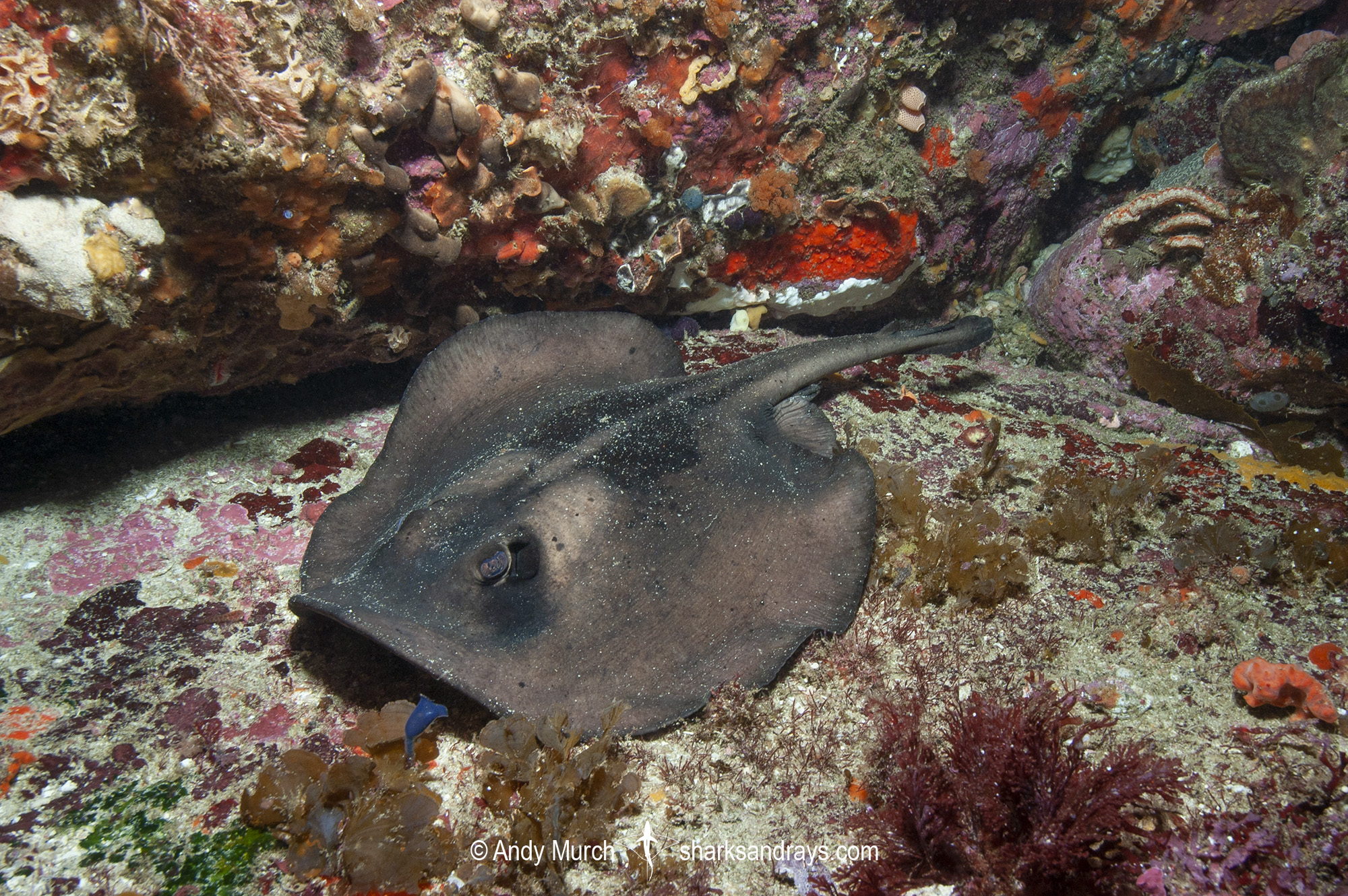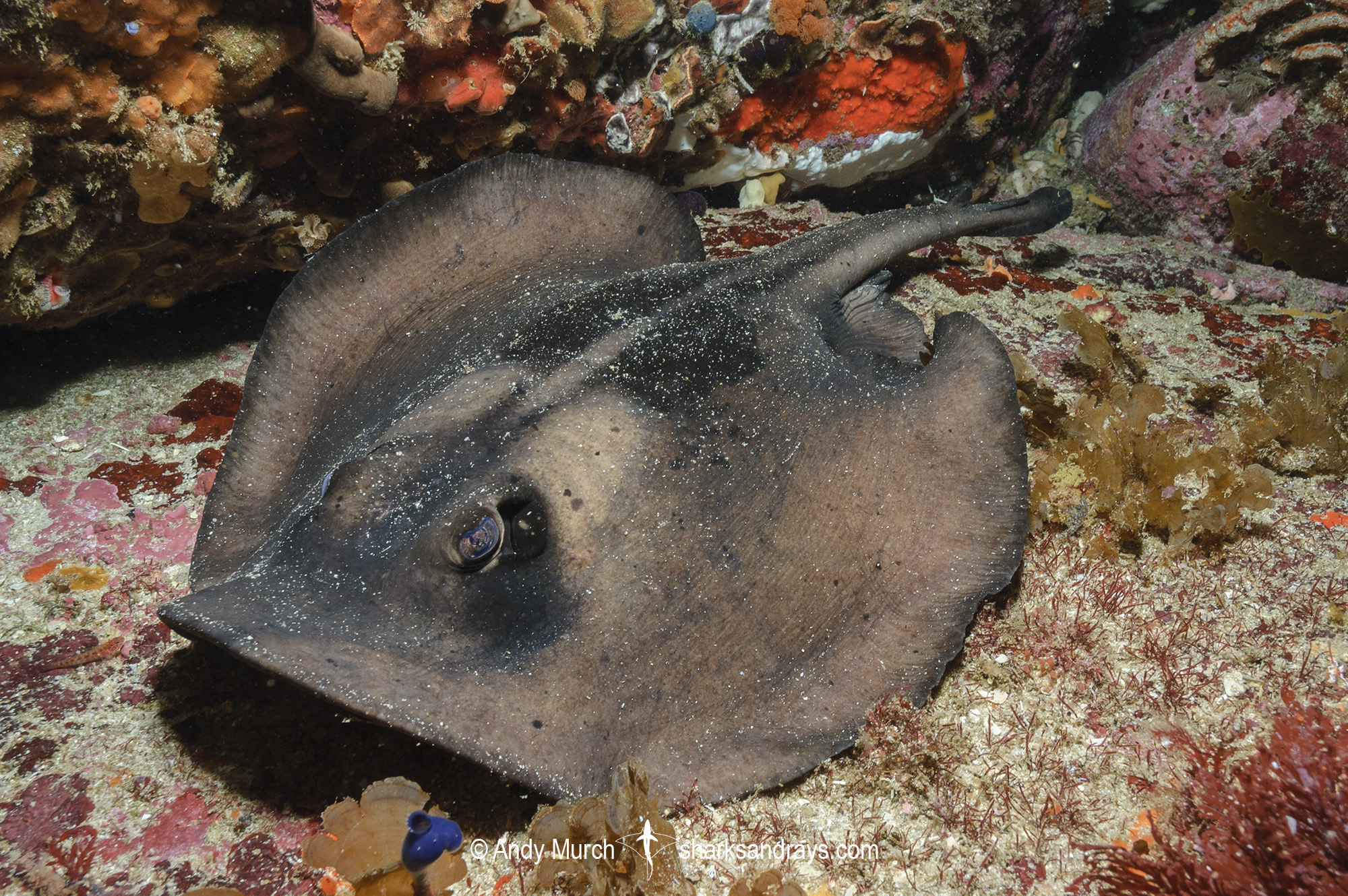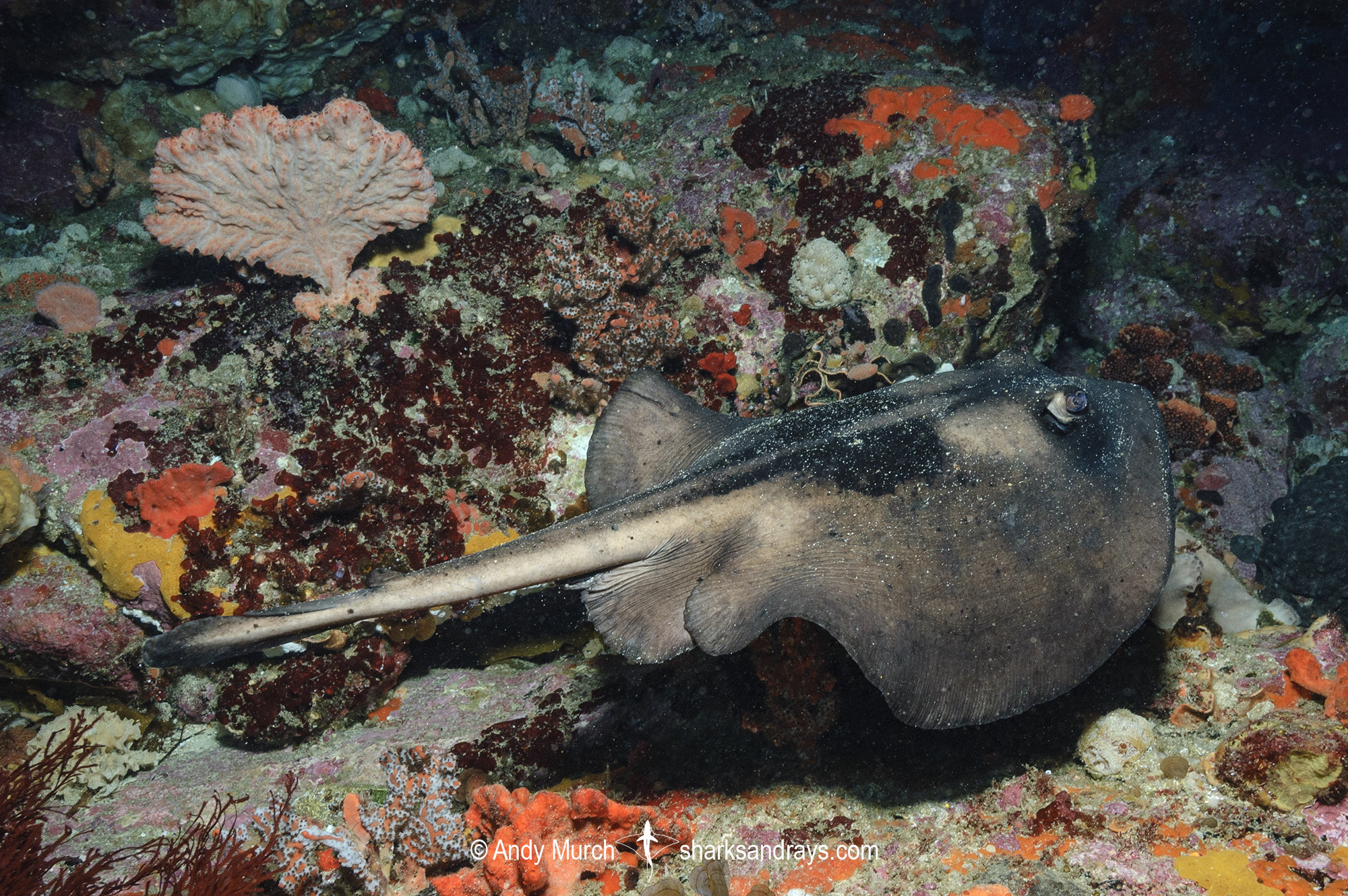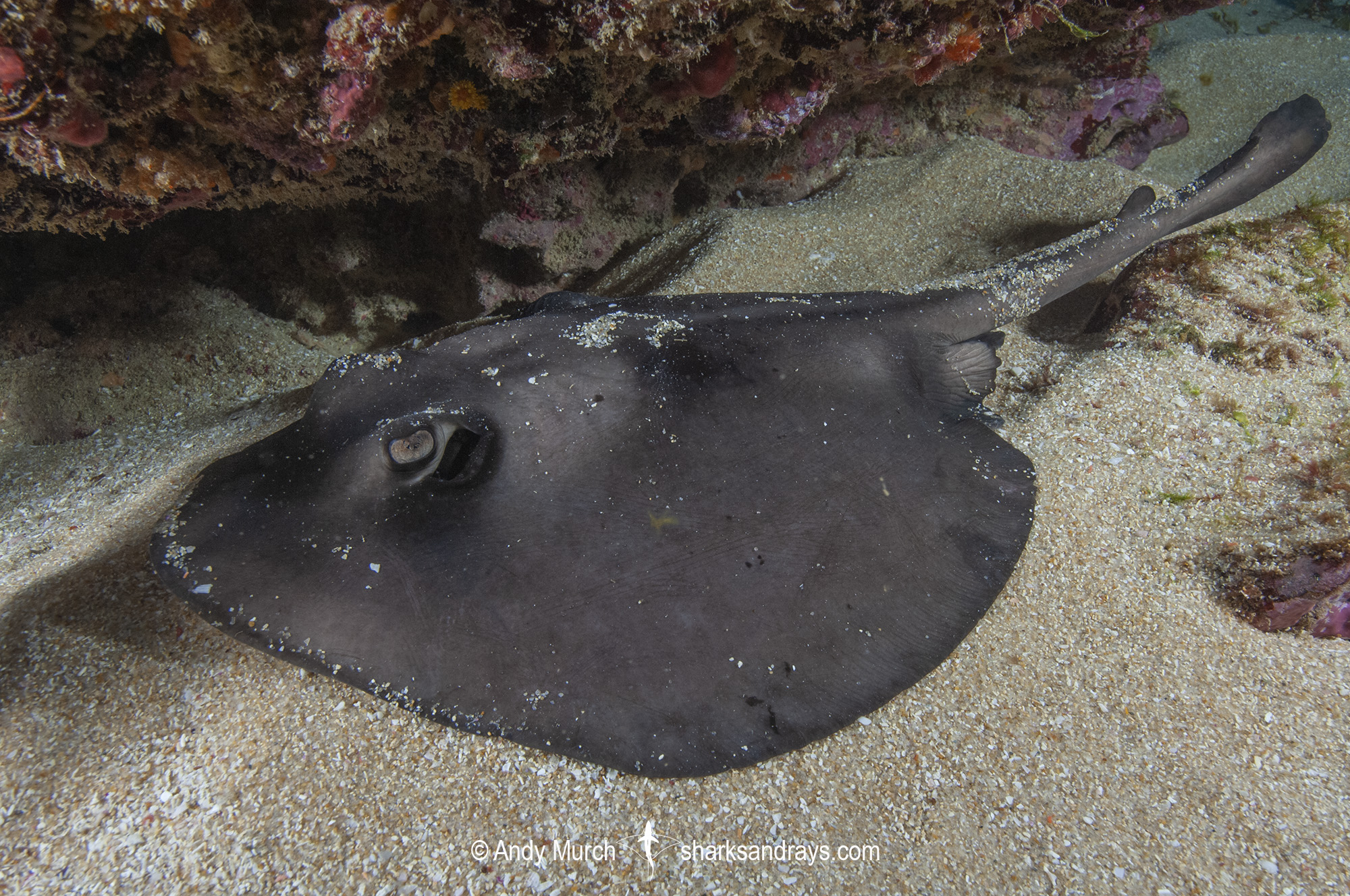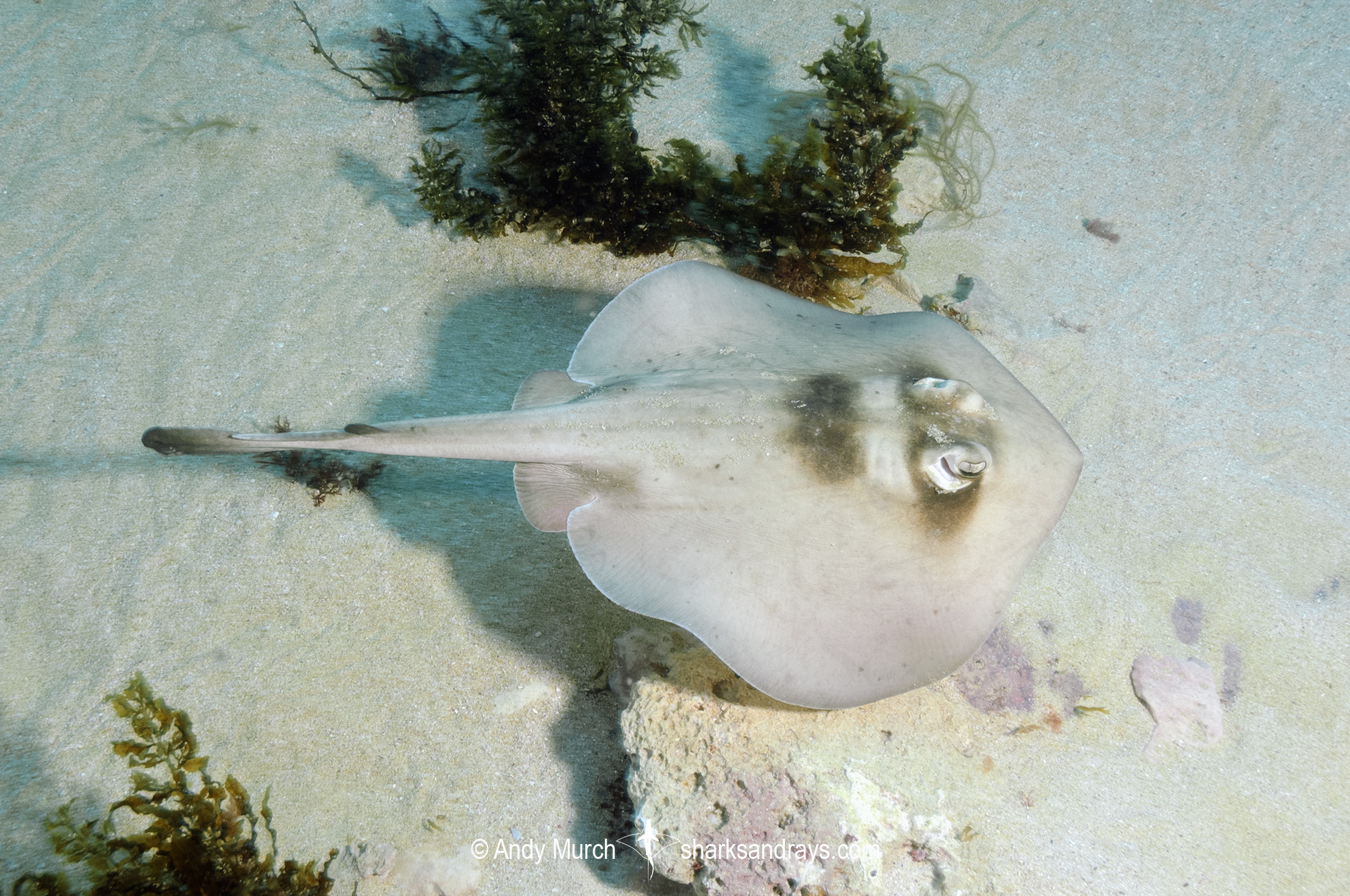Common name(s)
Striped stingaree.
Identification
A large stingaree with a sub-oval disc that is slightly longer than wide. Snout rounded, without an extended tip. Anterior margins of disc convex, apices broadly rounded. Disc completely smooth.
Eyes fairly small; orbit length 17-22% of snout length. Spiracle origin below mid-eye. Mouth small. Four oral papillae on mouth floor. Nasal curtain skirt shaped, not extended into a distinct lobe, posterior margin heavily fringed. Distinct, fleshy lateral-posterior lobe present on each nostril.
Tail 0.75-1 x disc length, oval in cross-section, depressed anteriorly. Small dorsal fin present anterior to long caudal sting. Caudal fin relatively large and deep.
Colour
Dorsum grey or brownish-grey with a dusky or black mask across eyes, and paired large black blotches on each side of mid-line at mid-back, narrowing to form black or dusky parallel stripes, often extending onto tail. Disc margin sometimes black or dusky. Ventrum mostly white or yellowish. Caudal fin dusky or black.
Size
Maximum total length 61cm. Disc width at birth unknown.
Habitat
Subtropical/temperate seas. Found on hard substrates and sand, usually adjacent to rocky reefs and/or kelp. Shallow bays to 88m.
Distribution
Endemic to Southwestern Australia. Extremely limited range between Eucla in the Southern Ocean, northwestwards to the Abrolhos Islands in the Indian Ocean.
Conservation Status
LEAST CONCERN
There is very little fishing effort across the known distribution of the Striped Stingaree, and the species is sparsely recorded as bycatch in localised prawn and scallop trawl fisheries off southwestern Australia. Its preference for rocky reef areas provides some refuge from trawling.
Where the species is taken as bycatch, a concern is the demonstrated low post-release survivorship of trawl caught stingarees (Campbell et al. 2018), and the fact that urolophids frequently abort pups upon capture and handling; even if gravid females survived capture, their reproductive output can be lost (White et al. 2001, Trinnie et al. 2009, Adams et al. 2018).
The species may also be subject to localised habitat loss and degradation due to increased levels of recreational water use and development in shallow embayments around southern Australia.
Citation
Kyne, P.M. & White, W.T. 2019. Trygonoptera ovalis. The IUCN Red List of Threatened Species 2019: e.T60083A68648254. https://dx.doi.org/10.2305/IUCN.UK.2019-1.RLTS.T60083A68648254.en. Downloaded on 17 March 2021.
Reproduction
Viviparous, probably with trophodermic nutrition. Litter size unknown.
Diet
Diet unknown.
Behavior
Poorly known. Sometimes conceals itself under seaweed.
Reaction to divers
Approachable with non-threatening movements but will bolt if approached too closely.
Diving logistics
Striped stingarees are fairly common along much of the coastline of southwestern Australia. They are often sighted at popular diving areas such as Albany, Busselton Jetty, and Rottnest Island.
Although they are sometimes found on top of the reef, careful searches of kelp stands (where they are known to conceal themselves) is probably the best strategy.

